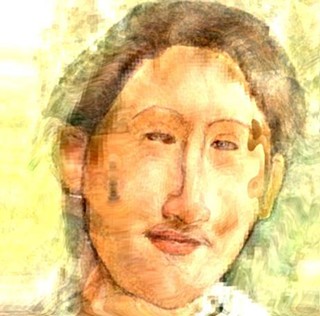I doubt that I'm giving anything away, because Knott's mid-1960s play was once a Broadway hit, has been repeatedly revived there, can be found in community theaters everywhere, and pops up regularly on cable TV in the form of a nicely edgy little movie starring Audrey Hepburn and Alan Arkin. The appeal of Wait Until Dark isn't what happens at the end--because it's dark, you can't really see much of what's going on, anyway--but how the characters inch their way toward that climax.
Beowulf Alley is presenting a not entirely secure production of the play, but its greatest asset is what counts most: a sympathetic but slightly sharp-edged actress in the lead role.
The character's name is Susy Hendrix. She's a young housewife, blinded in an accident a year before, who is still learning her way around the world without the benefit of vision. She does fine in her apartment, as long as people don't move the furniture (no, that's not a Helen Keller joke; it really does come up in the play). In her husband's temporary absence, Susy must fend off three men who invade her home looking for a doll stuffed with heroin. The Hendrix couple has come into possession of the doll accidentally; neither one has any idea what's in it, and, oddly enough, the doll seems to have gotten misplaced. The bad guys want it, and the ringleader, who calls himself Harry Roat, has concocted an elaborate plan to get Susy to turn over the doll without revealing to her why they want it.
Wait Until Dark wobbles under its complexities and contrivances--getting the doll takes three men and an elaborate series of ruses and false identities, even though Harry Roat seems more like the type who would persuade the Hendrixes to talk via the creative use of knives, pliers and electrical current. When Susy finally figures out what's going on--and she's a sharp enough observer to develop suspicions early on--her own scheme to defend herself is nearly as elaborate as Roat's charade.
At Beowulf Alley, director Dave Sewell manages to keep the action flowing as sensibly and smoothly as possible. The choreography of the climactic scene is perhaps a bit muddled, and I'm not sure that every light cue worked on opening night, but at least Sewell hasn't rushed his actors to reach that point. He knows that Susy, in particular, is an interesting person, not just a doll he can dangle in front of the audience.
Dallas Thomas' performance as Susy is the best reason to see this show. She very precisely presents to us a formerly plucky woman who has now gone fragile; she's full of frustration and self-doubt, yet making a valiant effort to get by, even if she does occasionally give in to bitterness and self-pity. In the end, when she knows her life is in danger, her fear is palpable, but although she may tremble, she never falls apart. There are many contradictory aspects to this Susy Hendrix, but Thomas strings them together into a coherent whole.
Steve McKee is also good as the bad guy who goes by the name of Mike Talman. He's no angel, but he's too soft for this sort of business, and McKee starts revealing this softness (which is not to be confused with niceness) from his very first scene.
Roat, the ringleader, is played by Gary McGaha, who has wisely decided not to imitate Alan Arkin's spectacularly creepy film performance, which somehow melded Maynard G. Krebs with Fu Manchu. If McGaha, with his steady malevolent gaze, is channeling any screen actor, it's Hugo Weaving as Agent Smith in The Matrix; he's just a few sibilants away from hissing "Misssssss-es Hendrix." While McGaha scores points for consistency, he doesn't suggest the pleasure that Roat derives from manipulating and intimidating people, including his own henchmen.
Roat's other henchman, who impersonates a police officer, doesn't fare very well in the hands of Benjamin C. Dygert. On opening night, in the early scenes, Dygert's timing was a bit off, and later on, he resorted to a one-note characterization, even though the script leaves room for at least the sketch of a personalized melody.
As Susy's husband, Chuck Rankin isn't on stage long enough to show what he's capable of, but it's amusing to see this tall, somewhat bearish actor embrace the very petite Thomas; in Rankin's arms, Thomas looks about 12 years old, which is the most graphic representation of her character's vulnerability you can imagine. Speaking of 12-year-olds, let's not forget Susy's feisty upstairs neighbor Gloria, an angry and unreliable little girl played exceptionally well by Molly Howard.
Joel Charles has contributed a fine set design, and Lori Franklin-Garcia's costumes anchor the characters in the 1960s without resorting to silly fashion shorthand. And these characters must remain in the '60s--so much of the action hinges on telephone technology made obsolete by cell phones, 911 and the demise of phone booths.
If you have a taste for this sort of old-fashioned stage thriller, itself made obsolete by the rise of murder-mystery TV shows, you may well be satisfied by this production's overall pacing--and especially Thomas' performance. Other elements of Wait Until Dark, though, are needlessly murky.








